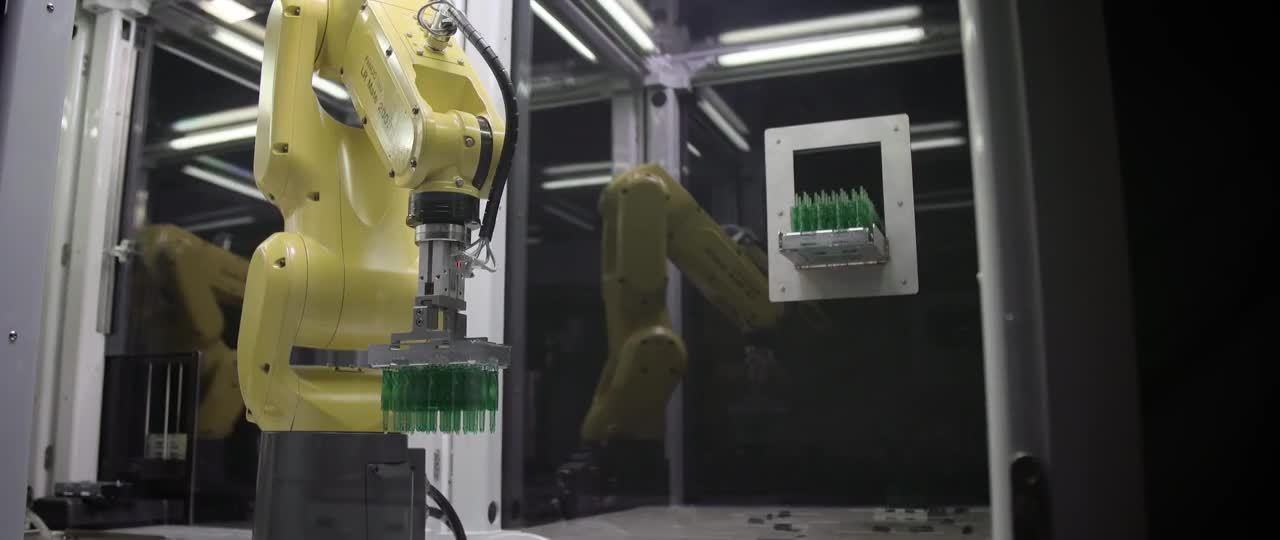Plastic Types and Characteristics
What is Resin?
Resin is used as the plastic material for Figure 4, Stereolithography (SLA) and entry-level industrial technologies. It is a liquid polymer that is UV sensitive and is hardened layer by layer by either a laser (in the case of SLA) or a projector image (in the case of Figure 4 or entry-level industrial printers). Resins can have properties similar to ABS, Polypropylene or elastomers. After printing, resin parts require post-curing in a UV curing unit for the best results possible.
The ProX 800, 3DS' latest industry-leading Stereolithography 3D printer, features a revolutionary new laser print head and a print material management system to go along with its legendary SLA accuracy and speed.
Production-Grade Nylons
Powder-based Nylons and reinforced/composites used on Selective Laser Sintering 3D printing technology is fused by a laser to form tough and durable production parts. These materials are designed to offer a full range of capabilities and isotropic properties, from rigid to elastomeric, high elongation, high impact strength, and high temperature resistance.
An aerospace duct made from production-grade nylon with Selective Laser Sintering (SLS).
Investment Casting
3D print investment casting patterns to create a digital workflow that eliminates tooling for pattern production. Print patterns in wax or plastic. Wax patterns fit in existing investment casting processes, making it ideal for customized metal components, bridge manufacturing and low volume production. Our castable resins are also available in antimony-free varieties for aerospace castings.
Wax 3D printed casting patterns from 3D Systems’ ProJet MJP 2500 IC are made from real wax and drop seamlessly into the investment casting process.
Biocompatible Materials
3D Systems offers a number of USP Class VI certified materials capable of meeting ISO 10993-5 & -10 standards for biocompatibility, suitable for use in certain medical applications such as surgical guides, as well as a portfolio of 30 unique NextDent biocompatible materials to address multiple dental applications. All NextDent materials are biocompatible and CE-certified, FDA listed and classified in accordance with the international medical device regulations.
Learn how the speed and accuracy of 3D Systems' NextDent 5100 3D Printer for dental is helping change the outlook of dentistry for Dr. Daniel Wismeijer and Prof. Eddie Chaoho Chien.
ABS & Polypropylene-like
Powder-based Nylon 11, Nylon 12 and reinforced/composites used on Selective Laser Sintering 3D printing technology is fused by a laser to form tough and durable production parts. These materials are design to offer a full range of capabilities and isotropic properties, from rigid to elastomeric, high elongation, high impact strength, and high temperature resistance.
3D Systems’ new engineering materials for the ProJet® MJP 2500 Series deliver advanced capability for functional prototyping across a range of applications, from high impact to high pliability to high contrast.
Plastic Materials and 3D Printing
3D Printing Applications for Plastics
“With 3D printing, the real strengths so far are complexity and customization. If you have a manufacturing process where you need a lot of detail or a lot of differentiation between parts, that’s where 3D printing can play.”— Chuck Hull, Founder and Chief Technology Officer, 3D Systems
